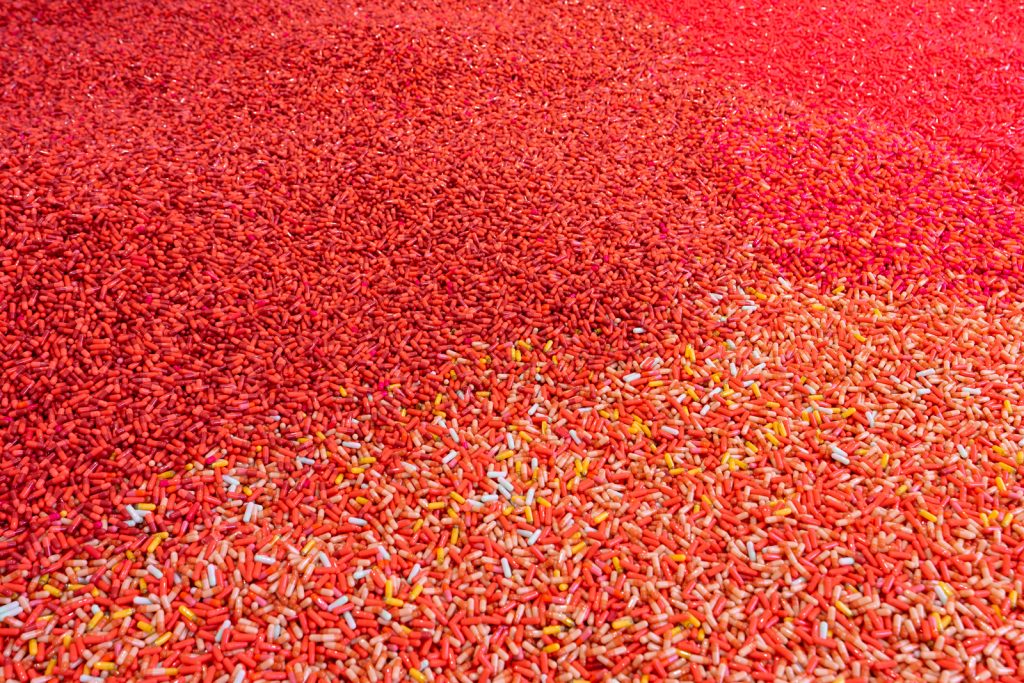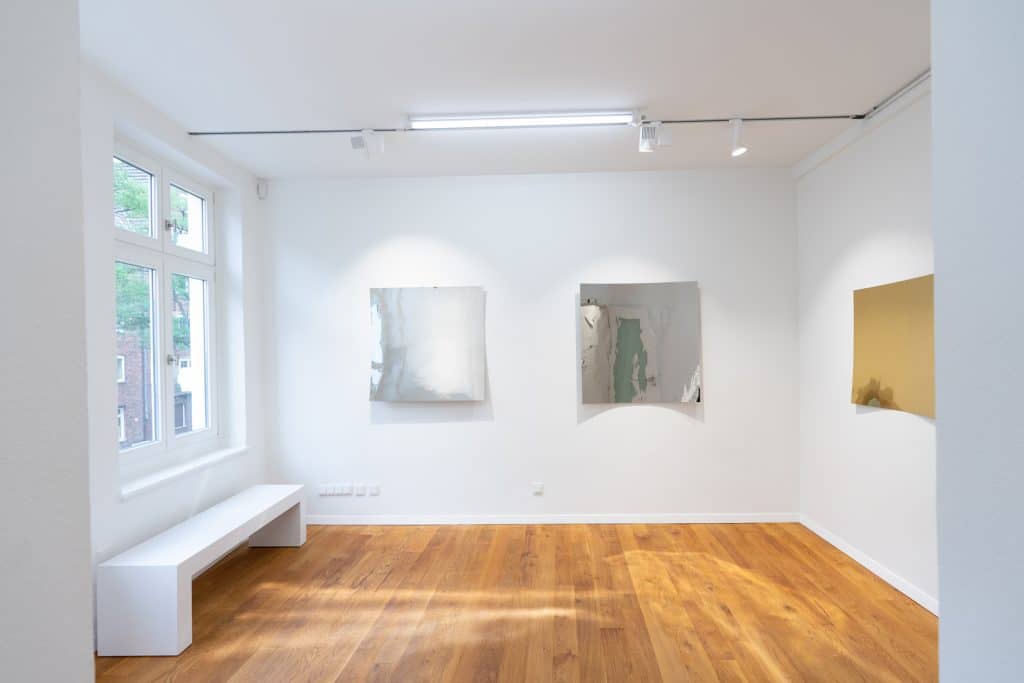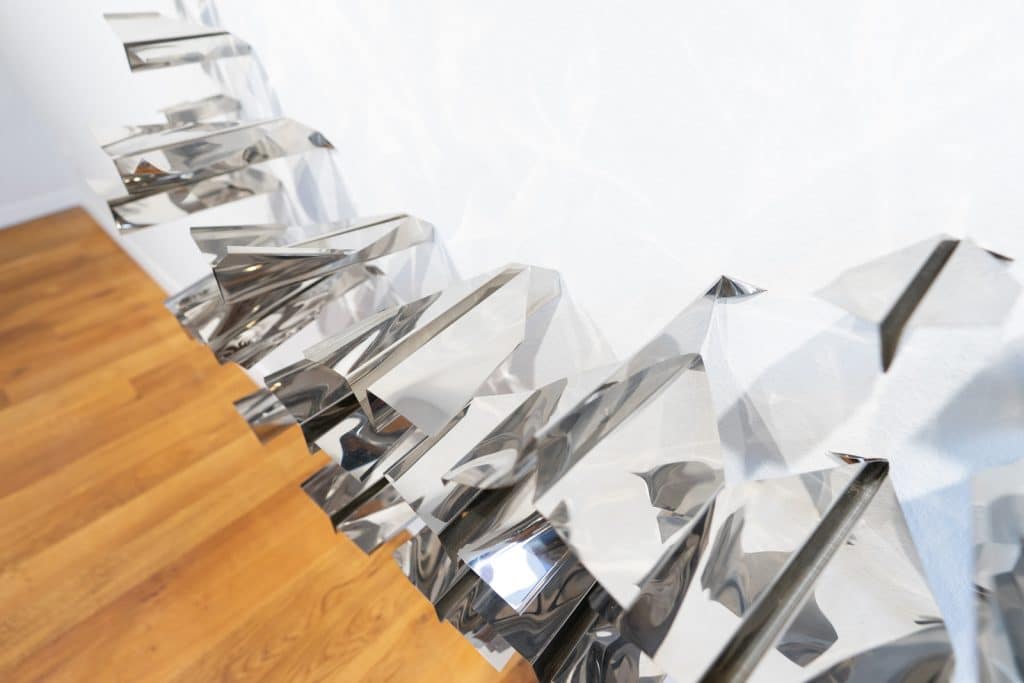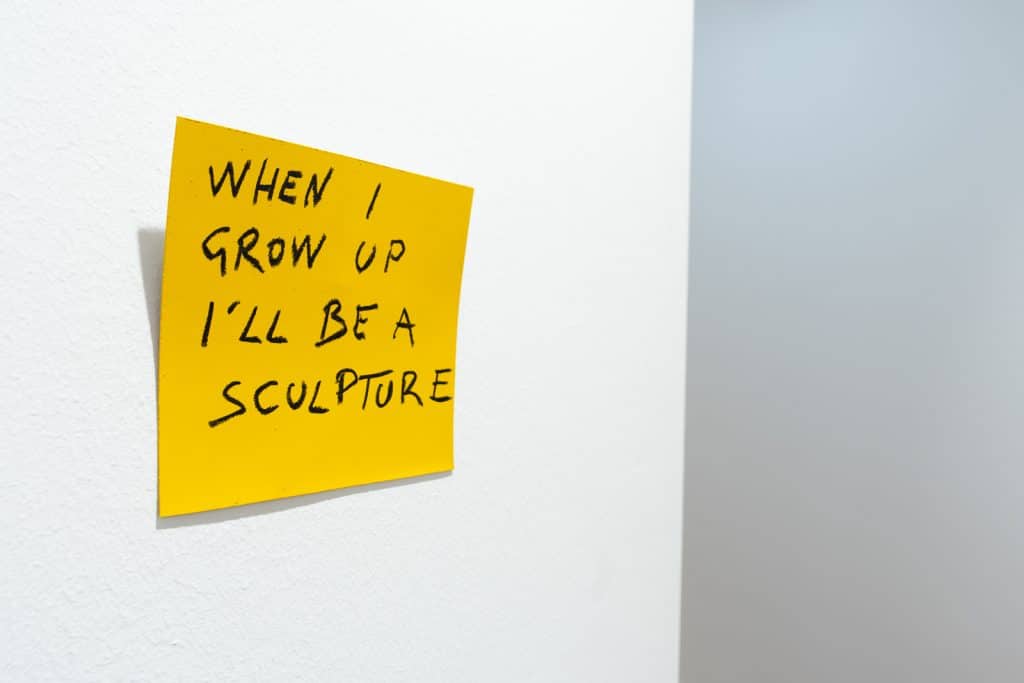Einmal ist Keinmal
Anna Laudel Gallery presents Daniele Sigalot’s new solo exhibition “Einmal ist Keinmal” in their newly opened space in Dusseldorf. This is the second solo exhibition of Sigalot with Anna Laudel.
Daniele Sigalot is a conceptual artist, whose artistic language is joyful, cynical, absurd and shocking through its content, materiality, and scale. “Einmal ist Keinmal” means ‘Once is never’, which implies that doing something only once, does not count. After the extensive solo exhibition of Sigalot presented at Anna Laudel Gallery in 2018, which was titled “Empires Ago”, almost all works from that exhibition will be presented again with the title of “Einmal ist Keinmal”, including with new photography series that artist has been working on. This German saying also fits very well to Sigalot’s cynical artistic language, which is present throughout the exhibition.
John Berger mentioned in his classical work, Ways of Seeing, “Images were first made to conjure up the appearances of something that was absent. Gradually it became evident that an image could outlast what it represented; it then showed how something or somebody had once looked – and thus by implication how the subject had once been seen by other people.”i Sigalot seeks to unveil the absence of the creativity process. He appropriates the concept of representation in its literal sense to expand his conceptualization of art works. He tells the untold story of failures and makes these absent images, visually accessible to his audience.
Sigalot is aware that one cannot be successful without failures. Any creative person goes through a struggling process in order to come up with good ideas. According to him, in order to find a successful idea, at least hundreds of ideas might go to trash. Sigalot transforms this process of producing “bad” ideas into sculptures that balls and towers of wrinkled up papers in a large scale of art works welcome the audience at the first floor. Each seven wrinkled paper towers topped with a carefully folded paper sheet to symbolize the agonizing process of producing a good idea. However, instead of using the existing piles of papers from his studio, the artist twists the materiality of ephemeral texture of a paper sheet and alters with aluminum. Sigalot not only plays with this perception of the material but also with the scales of objects, which are massively exaggerated.
What is striking about Sigalot’s work is that it is simple as well as strong and sharp. Moreover, Sigalot challenges the dichotomy through materiality of his works and cynical language on his text-based works. What is ephemeral or enduring? What is natural or artificial? What does color mean? What does one expect from life and future? What is art? These rhetoric questions trigger the ironic language of the artist. As a person who worked in the advertising industry, he appropriates his advertising background in order to create sharp and short sentences, which are critique to art market, perception of life and expectation from future. Enlarged post-it notes are part of the production of ideas but they are indeed satirical, which capture the audience with their humor. In the exhibition ten sets of post-it look-a-like notes are placed along with the trilogy of letters that artists created in 2014. Artist wrote letters to Art, Destiny and Future.
Sigalot’s exhibition presents another on-going series which are dedicated to the cities that artist lived so far. These maps, which are carved into reflective stainless steel surfaces, are also functions as distorted mirrors. Each encounter of the audience with the work is personal experience however due to the selection of the cities, it is the story of Sigalot’s personal life. These series symbolizes the gratitude of artist to those cities that shaped his life: Rome, Milan, Barcelona, London, Berlin, and Naples. For this exhibition, the artist creates two new maps of Dusseldorf and Cologne along side of Rome, where the artist’s hometown is.
In the exhibition, Sigalot presents one of his floor installations. The artist covers the ground with colorful medication pills, in which the perception of the audience challenged as if the ground is covered with crystal minerals. The installation constructs a new layer of topography in relation to the map series on the same floor. Furthermore the numerous pills force one to question the scale of contemporary pharmaceutical industry in contrast to rising media hype on self-care.
When Barthes compares image and photography in the press and arts, he points out the paradoxical content of the message and its relation to code. Press image indeed aims to represent the reality whereas artistic photography connotes symbolism and abstraction.ii In Sigalot’s new photograph series, titled “SUPERFICIAL”, Barthes’ differentiation of press and artistic image does not function. One feels despair and hope in the three images show the same depiction in different colors of a hand rising out from the water and holding a burning rescue flare. Sigalot brings together the contrast between water and fire beautifully to question the visibility of the bigger picture beyond the surface.
The third and the last floor in the exhibition presents Sigalot’s renowned paper plane series as a standing sculpture and wall installations. The shape of the paper plane is another pattern that is repeatedly used in Sigalot’s works. He is using aluminum sheets or stainless steel in lieu of paper. The universal concept of the folded paper plane invites visitors to reconnect with their memories from their early childhood or recent past.
The exhibition concludes with a neon series of Sigalot, in which he plays with the concept of colors and their perception. The artist prepares a room, where colorblind people perceive colors differently than other people, and through this discusses the possibilities of different perception and questions what is wrong or right.
Daniele Sigalot’s artistic practice is built on reshaping and recycling the failure of ideas. “Einmal ist Keinmal” brings together these accumulated ideas with new works. It is also the conclusion of a journey that started in Istanbul and continues in Dusseldorf. As he started with the concept of recycling bad ideas in 2017, with his work titled “6 Good Ideas Above, Between And Under 179 Bad Ones” that continued with the large installation titled “Everything That Could Have Been But Wasn’t, Now Is”, which was produced for Istanbul exhibition for the first time. Einmal ist Keinmal exhibition closes this cycle and journey, just for now.
Tuçe Erel
iJohn Berger, Ways of Seeing (London: Penguin, 1972).
iiRoland Barthes, A Barthes Reader (New York: Hill and Wang, 1982).






































































